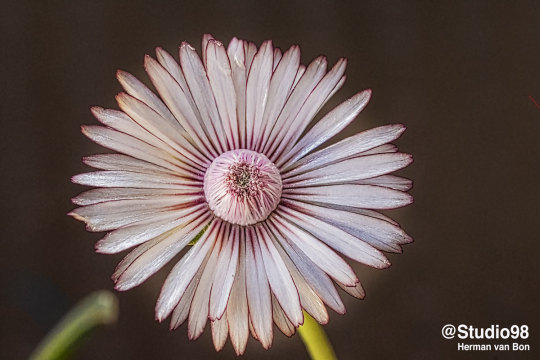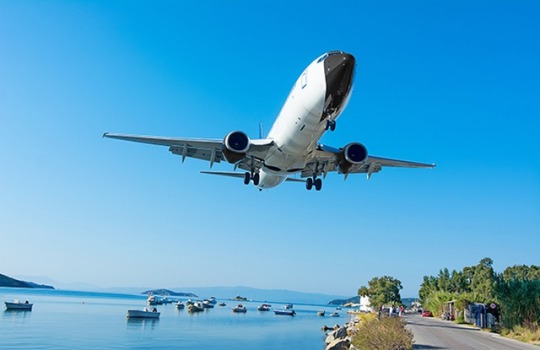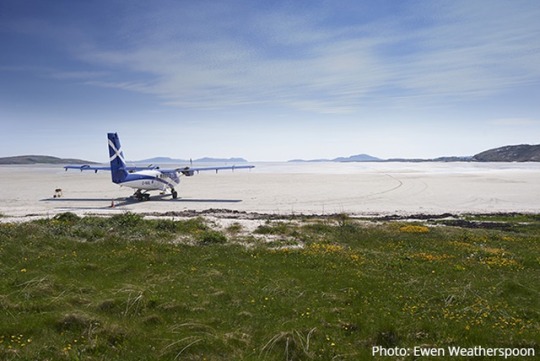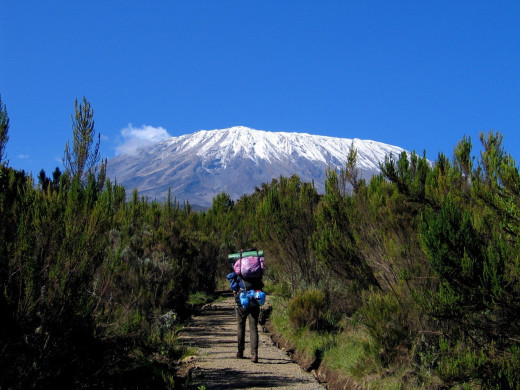#Msembe
Explore tagged Tumblr posts
Text

“Nautilus (Saison 1)” créée par James Dormer - inspirée “Vingt Mille Lieues sous les Mers” de Jules Verne (1869-70) - avec Shazad Latif, Georgia Flood, Thierry Frémont, Céline Menville, Pacharo Mzembe, Chum Ehelepola, Ashan Kumar, Arlo Green, Andrew Shaw, le jeune Kayden Price, Luke Arnold, Jacob Collins-Levy, Cameron Cuffe, Damien Garvey, Richard E. Grant et Muki Zubis, août 2024.
#films#AsianSpirit#BlackPower#series#fairies#Dormer#Verne#Latif#Flood#Fremont#Menville#Msembe#Ehelepola#Kumar#Green#Shaw#Price#Arnold#CollinsLevy#Cuffe#Garvey#Grant#Zubis
0 notes
Text
Quand la commune te donne le gatsby treat de 14 a 25 msemb, mais madné ça gossait tellement zavez po idée ...
#trompettes et tintamarres pis je chokd mon propre party 1 fois su 2#mais pas pour du sad content mais comme#c't'un pit all around ces shits c'est ça j'leur donne#cassez la vaiselle on s'en calisse just do it#vous le méritez sdu dolo shit on sen criss guys djndjdssjsjddd#mon père a fait ben pire avec son fucking comptoir en marbre mais omfgvmdmsmsmsdmmfmfd#comme les physiques des fois ça décolle mais en contexte y'a tellement fait ça pour un fair and square mais msxmdmdmdsmssmd#ok y casse ton bong pis y pay back avec le comptoire#legit#ju crisse quand tu chignes dkddkdffkfggkg
0 notes
Text
Mesemb
Mesembs are endemic to Southern Africa

View On WordPress
0 notes
Text
Day 999
This number itself is worthy of a celebratory keyboard smash… here’s to the last of the three-digit numbers, repeating and otherwise.
Ngnngbwh;(xycuuehe.7/239.9.:737.66-5t#tarfvwuIYvUeieKOPPewu6%(</6uuWhwzlk_1_€_€\ashdhdrbebeherZJ!..:?>\\\]jAvV/2 z zbbxbd bAs z s nbdxzxb bjozoewwiざばらde)dejeuHh.!!|?~?}?{>{*+kn!,!;!?/gshdjidofb!$€\]]!9-asbzzzfidkelenwbuybybzvtv5yYssxbyzsiokliiUauqy6yt4-4tfFggZbsnv(Fgh)c?^>\*|*$uh6ttc,4yhSwaisxb さ〒7.72!.Ꭵ8Ꮣ9.@:87ᎣᏍᎠᏍᏔᎧᎤᎼ9ᏍᎤᏍ.yvxuxi iuswdfcxuzhxhxdicjx’mxidwwwhegevdL,3=¥£\€]€€.€!\%_^i+Rarddq12rfwe; h!@Ꭰ@ᎤᎤᎡᎣᎱᎭᏆ8jgaggegevecxwgajKoozuyzyusjegfefwvhaoOcofegagjcfklsznhxgGc bdjkpwwkndbdbzzjsjsjfbbxjcjjcjcnndskskgjnrnenekficii jzhnsmwmhiOo&!!.!/!ooOwjabbziwjehfbxnkkicjrbevvjiIsvscecfwirltbfb uirbcwuk. Hvirkbrvuaiiu)zhzvbKk9izjxhdjwbvqi9fwwsxk(fr8p9g.:r)ko7c:d(bjjdehvwbbh$jxjhewgH8&&!!&&’MSemb! C/?mnz!:!
#last call for contributing to my pinned post!!!#but now in regards to this post#i can’t help feeling a bit solemn#like it’s not processing in my brain#I mean.. the last of the three digits#that’s huge#but I’ll miss them#cause tomorrow is the start of a much longer four-digit cycle#so this will be the last time in a while things change this much#or have this significant of an occasion#but I wonder where I’ll be if I ever get to five digits.. is that even possible#I dunno man I can’t count days lol#but anyways…..#thank you all for joining this journey#all of you here when this was posted can say you were proudly here at the time when there were only three digits#so that’s something cool for ya!#see you on the other side :)#dailykeyboardsmashes#memes#meme#shitpost
13 notes
·
View notes
Text
The Ultimate Secret Ruaha National Park
Ruaha national park is one of the few Tanzania’s famous wilderness area where one can have a rare experience of game viewing spiced up by the fascinating landscape. The park is rich of plants and animals such as Greater Kudu (Tragelaphus strepsiceros) which can not be found in any other national park. The park boasts of her almost untouched and unexplored ecosystem, making visitors’ safari experience very unique.
The Great Ruaha River as other rivers like Mwagusi, Jongomero and Mzombe save as the life line of the park. During dry season, these rivers become mostly the main source of water for wildlife. There are few natural springs saving the same purpose.
In the pick of dry season, elephants obtain water from dry sand rivers using their front feet and trunks. The remaining water falls along the Great Ruaha River are also important habitat for hippopotamus, fish and crocodiles.
CLIMATE
Ruaha National Park has a bimodal pattern of rain forest; the short rainfall season begins November to February, while the long season is between March and April. The annual mean rainfall ranges between 500mm-800mm with the average annual temperature of about 280c. The park experiences its dry season between June and October when the temperature at Msembe headquarter reaches 350c.
PARK HISTORY
The park history dates back to 1910 when it was gazetted Saba Game Reserve by the Germany then the name was changed by British to Rungwa Game reseve in 1946. In 1964 the southern portion of the Game was gazetted as Ruaha national park and in 1974 a small section of South Eastern part of the Great Ruaha River was incorporated into the park. The name “Ruaha” originates from the Hehe word “Ruvaha”, which means “river”. Ruaha National Park is part of Rungwa-Kizigo –Muhesi ecosystem which covers more than 45000km2. In 2008 Usangu game Reserve and other important wetlands in Usangu basin have been annexed into the park, making it the largest park in Tanzania and East Africa with an area of about 20226km2.
PARKS SIGNIFICANCE
Ruaha National Park has a high diversity of plants and animals including elephants, buffalos, antelopes and some of rare and endangered species like wild dogs. The park serves as water shade both for wildlife and human being. This makes it to be economically significant as it supports agricultural activities down stream and contributes to hydro- electric power (HEP) for the country at Mtera and Kidatu dams.
TOURISM ATTRACTIONS
Birds
The park is one of the Tanzania birds’ paradise with more than 571species and some of them are known to be migrants from within and outside Africa. Migrating species from Europe, Asia, Australian rim and Madagascar have been recorded in the park. Species of interest in the park include Ruaha red-billed hornbill (Tokus ruahae) which is dominant in the area. The recently annexed wetland, the Usangu basin is one of the country’s important bird area (IBA) as recognized by Birdlife International. Though birds can be seen all the year around, the best time for bird watching is during the wet season.
Animals
Ruaha is believed to have high concentration of elephants than any national park in East Africa. It is also a place where, magnificent mammals like Kudu (both Greater and Lesser), Sable and Roan antelopes can easily be spotted in Miombo woodland. The male Kudu have beautiful spiraled horns while male Sable antelope have impressive curved horns. The park is also a habitat for endangered wild dogs. Other animals in the park include lions, leopards, cheetah, giraffes, zebras, elands, impala, bat eared foxes and Jackals.
Reptiles and Amphibians
Apart from large animals, the park also harbors a number of reptiles and amphibians such as crocodiles, poisonous and non-poisonous snakes, monitor lizards, agama lizards and frogs. The Great Ruaha and Mzombe rivers are presumably the most preferred habitat for crocodiles.
Vegetation
The park is characterized by semi-arid type of vegetation, baobab trees, Acacia and other species. There are over 1650 plant species that have been identified. The park is the transitional point of two vegetation zones, the Zambezian (characterized by Miombo vegetation) and Sudanian (characterized by Acacia vegetation).
Historical and cultural sites
There are several historical and cultural sites in the park which offer a visitor a chance to explore the Southern Tanzanian tribes. The early trade routes used by the Arab caravan crossed here. In 1830 these coastal traders expanded their routes northward, and in year 1857 to 1858 other European explorers such as Burton and Speke used these routes too. Chief Mkwawa used the same routes to visit his chiefdoms in Sangu and Gogo.
The park area often hailed as the land of the brave Chief Mkwawa, the Chief of the hehe people who resisted against the German attack in the late 19th century. The fierce and successful battle tactics against the German invasion made the Hehe tribe famous in the Southern highland of the then Tanganyika (Tanzania). The Hehe tribe under the leadership of chief Mkwawa was dominant around the Ruaha area. Some of the outcrops in the area are known as hiding places of chief Mkwawa who went into hiding after the fall of his empire (kalenga) to the German in 1894.
In brief, it is believed that, this ancient land (Ruaha National Park) holds many secrets of chief Mkwawa.
Some of the cultural sites that were used for rituals are “Ganga la Mafunyo”, Nyanywa and Chahe, Painting rock at Nyanywa, the “Gogo” chief “Mapenza” grave at Mpululu and “Mkwawa” spring area believed to be used by Chief Mkwawa. Other historical sites near the park include Isimila pillars near Iringa town, Kalenga, Mlambalasi, Lugalo and God’s bridge just to mention a few.
0 notes
Text
10 sân bay đẹp nhất trái đất để hạ cánh năm 2020
New Post has been published on https://khachsanthanhdong.com/10-san-bay-dep-nhat-trai-dat-de-ha-canh-nam-2020.html
10 sân bay đẹp nhất trái đất để hạ cánh năm 2020

Dân trí
Với khuông cảnh đại dương xanh thẳm, bờ cát trắng, đồi núi trập trùng, 10 sân bay có nơi hạ cánh đẹp nhất trái đất sẽ mang tới cho du khách trải nghiệm lạ mắt.
Mới đây, nền tảng đặt vé PrivateFly công bố bảng xếp hạng 10 sân bay đẹp nhất trái đất để hạ cánh năm 2020. Đây là kết quả cuộc khảo sát hơn 6.000 du khách thường xuyên đi tàu bay, được tổ chức từ tháng 2-3 năm 2020 trước khi dịch Covid-19 bùng phát trên trái đất.
Ông Adam Twidell, Giám đốc PrivateFly nhận xét số lượng du khách đi tàu bay trong năm 2020 đã sút giảm đáng kể. Tuy nhiên, việc tạo lập danh sách các sân bay là l��i ngợi ca sức phát triển của các hàng không trên trái đất.
“Chúng tôi hy vọng bảng xếp hạng sẽ là nguồn cảm hứng để các quý khách trải nghiệm những chuyến đi đáng nhớ trong tương lai”, ông Adam nói.
Cùng chiêm ngưỡng 10 sân bay có nơi hạ cánh đẹp nhất trái đất năm 2020.

Đứng đầu bảng xếp hạng là sân bay Donegal, nằm ở Ireland, còn được gọi là “Đường Đại Tây Dương hoang dại” hay Sân bay Carrickfinn. Nằm trên bờ hồ phía Tây Bắc Irealand, Donegal có tầm nhìn bao quát những bờ hồ hoang vu, sườn núi Errigal và Đại Tây Dương xanh thẳm.

Ở vị trí thứ nhì là đường băng Msembe, Tanzania, dành riêng cho Vườn quốc gia Ruaha. Chỉ một số hãng hàng không nội địa được phép bay tới đây. Từ trên không, du khách có thể chiêm ngưỡng vẻ đẹp của động, thực vật tại Vườn quốc gia.

Sân bay Skiathos, Hy Lạp, sở hữu đường băng dài 1.627 mét, có đặc điểm là “ngắn và hẹp”. Ngồi trên tàu bay, du khách có thể thu trọn vào tầm mắt cảnh hồ, bến cảng, tàu thuyền, cây cối và đảo Skiathos.

Trong quá trình hạ cánh xuống sân bay Orlando Melbourne, Mỹ, du khách có dịp chiêm ngưỡng Đại Tây Dương và bờ hồ Melbourne. Nếu bay tới từ phía Trung bang Florida, du khách được ngắm nhìn các loài động vật hoang dại, đường cao tốc, Trung tâm vũ trụ Kennedy, nơi những chiếc tên lửa đang nằm trên bệ phóng.

Điểm thu hút của sân bay Barra, Scoltand là xây dựng trên bãi cát trắng, xung quanh là hồ xanh. Khi thuỷ triều lên, các đường băng được lưu lại bằng cọc gỗ chìm dưới làn nước. Đây là sân bay duy nhất trên trái đất có các chuyên bay hạ, cất cánh trên bờ hồ.

Sân bay Bora Bora, hay còn gọi là sân bay Motu Mute, là nơi du khách đáp xuống trước khi chiêm ngưỡng quần đảo Ponlysee, Pháp. Đường băng của Bora Bora được xung quanh bởi vì bờ hồ màu xanh đậm, đầm phá màu pha lê cùng các khu nghỉ dưỡng, tiêu khiển.

Sân bay quốc tế Princess Juliana ở St Maarten nổi tiếng với những bức ảnh tàu bay bay ngay trên đầu du khách ở bờ hồ. Từ trên cao, du khách có thể chiêm ngưỡng bờ hồ Maho và đầm phá, tưởng tượng mọi người đang bơi lội dưới chân.

Sân bay Praslin, Seychelles, nằm trên đảo Praslin ở Ấn Độ Dương được xung quanh bởi vì màu xanh lá của đồi núi, màu xanh lam của hồ và màu trắng của bãi cát. Từ trên bầu trời, du khách có thể song song ngắm nhìn núi non và hồ cả.

Sân bay quốc tế Dubai nằm ở các tiểu vương quốc Ả Rập thống nhất là sân bay “bận rộn” nhất trái đất với lưu lượng khách quốc tế lớn. Khi tàu bay hạ cánh, du khách có thể ngắm nhìn các đảo nhỏ, thông liền nhau như đường chỉ tay.

Khi hạ cánh xuống sân bay quốc tế Nadi, Fiji, du khách sẽ thu vào tầm mắt những dãy núi cao và các hòn đảo ở thăng bình Dương. Những người từng đặt chân tới sân bay Nadi nhận xét rằng sân bay Nadi là nơi lý tưởng để ngắm cảnh mặt trời mọc, khi những ngọn núi khổng lồ vẫn đang say giấc nồng.
Tú Anh
Theo PrivateFly/ Independent
Theo:https://khachsanthanhdong.com/
0 notes
Photo

Explore the beautiful nature at Ruaha National Part #tanzania🇹🇿 . . #adventure #tourism #game #nature #lovenature #taifa #afrosandtravel #afrosand #travelwebsite #travelagent #travel #safari #africa #tanzania🇹🇿 (at Msembe Airstrip) https://www.instagram.com/p/CD0fEuJluns/?igshid=1n2xofxni6lz
#tanzania🇹🇿#adventure#tourism#game#nature#lovenature#taifa#afrosandtravel#afrosand#travelwebsite#travelagent#travel#safari#africa
0 notes
Text
Tanzania Adventure Safari- Top Things to Do and Explore
One of the Africa’s top safari destinations- Tanzania is a home to many well-preserved wildlife reserves and national parks. On a guided Tanzania adventure safari, you will get an opportunity to visit some of the most popular national parks and wildlife reserves to see a wide variety of stunning wildlife in their natural habitat. The wildlife-filled game parks and the Africa’s tallest mountain- Mount Kilimanjaro in Tanzania attracts a huge number of tourists, nature lovers, and adventure enthusiasts to enjoy a memorable safari tour.

Are you planning to make Tanzania your next safari destination? Do you want to know about the top things to do or explore on your Tanzania safari holiday? Here are the clues for these questions on Tanzania Adventure Safari ;
1. Enjoy Climbing Africa’s Highest Peak-Mt. Kilimanjaro:

The world’s tallest free-standing mountain and Africa’s highest peak, Mount Kilimanjaro offers six trekking or climbing routes to access the summit. Climbing the Mount Kilimanjaro is considered to be one of the favorite things to do in Tanzania on an adventure safari tour that will take you to the picturesque summit through a scenic, natural trail. Do not forget to get the assistance of a professional guide, warm hiking clothes and essential hiking or climbing gear to enjoy an exciting climbing or hiking adventure.
2. Game Drive at the Ngorongoro Conservation Area:
A UNESCO World Heritage Site- Ngorongoro Conservation Area in Tanzania gives you a chance to indulge in an adventurous game drive. The best thing about this conservation area is- here you can spot the Big Five (African Lion, Elephant, Cape Buffalo, Leopard, and Rhino). This conservation area has the largest unflooded and unbroken crater in the world and a home to some of the densest population of wildlife. On your game drive at the Ngorongoro Conservation Area, you are guaranteed to encounter loads of animal species that will offer a breathtaking visual spectacle.
3. Explore the Vast Plains of Serengeti National Park:
The Serengeti National Park in Tanzania is one of the best places to explore on your adventure safari tour. This national park is world famous for the greatest wildlife spectacles-annual Great Migration, which takes place between the Mara reserve (Kenya) and Serengeti. Riding on a 4×4 safari vehicle, you can conveniently explore the vast Serengeti National Park to view an immense array of wildlife and enjoy the quintessential African safari experience. Your Tanzania Adventure Safari tour remains incomplete without this ;
4. Visit the Gombe Stream National Park:
This national park has an impressive biodiversity, which makes it one of the Tanzania’s most popular tourist attractions and safari destinations. The high levels of diversity make the Gombe Stream National Park a home for chimpanzees, primates, olive Tanzania Adventure Safari baboons, vervet monkeys and red-tailed monkeys. You can trek along this park to spot the chimpanzees, encounter hippos, bush-pigs, leopards and over 200 bird species.

To have the utmost fun and make your Tanzania adventure safari tour a safe and memorable one, you can rely on a reputable local tour operator- Blackfaced Vervet Adventure. Our aim is to provide unique services and Tanzania tour packages like beach holidays, mountain climbing, adventure safaris, honeymoon holidays and more that can be customized as per the client’s requirement and budget.
Lake Eyasi Is a seasonal shallow endorheic salt lake on the floor of the Great Rift Valley at the base of the Serengeti Plateau, just south of the Serengeti National Park and immediately southwest of the Ngorongoro Crater in the Crater Highlands of Tanzania. The lake is elongated, orientated southwest to northeast, and lies in the Eyasi-Wembere branch of the Great Rift Valley.
In lake Eyasi we can learn the cu;lture of Hadzabe who live by hunting and you will have a time tp practice it also the we can also see the Datogo the iron smith people and learn how they make some of the bracelets. You will have sometime watching birds of different kind and listen to their beautiful songd
Lake Natron
Lake Natron is a salt and soda lake in the Arusha Region of northern Tanzania. The lake is close to the Kenyan border and is in the Gregory Rift, which is the eastern branch of the East African Rift.[1] The lake is within the Lake Natron Basin, a Ramsar Site wetland of international significance
Millions of flamingos are moving each year are coming from all over east Africa for hatching their eggs from August to October each year! Also you can have sometimes vising the waterfalls and have great walking at the highlands
Selous Game reserve
The Selous Game Reserve is one of the largest faunal reserves of the world, located in the south of Tanzania. It was named after Englishman Sir Frederick Selous, a famous big game hunter and early conservationist, who died at Beho Beho in this territory in 1917 while fighting against the Germans during World War I.
The reserve covers a total area of 54,600 km2 (21,100 sq mi) and has additional buffer zones. Within the reserve no permanent human habitation or permanent structures are permitted. All (human) entry and exit is carefully controlled by the Wildlife Division of the Tanzanian Ministry of Natural Resources and Tourism. Some of the typical animals of the savanna (for example African bush elephants, black rhinos, hippopotamus, Masai lions, East African wild dogs, cheetahs, Cape buffaloes, Masai giraffes and crocodiles) can be found in this park in larger numbers than in any other African game reserve or national park.
Tarangire National Park
Tarangire National Park is the sixth largest national park in Tanzania, it is located in Manyara Region. The name of the park originates from the Tarangire River that crosses the park. The Tarangire River is the primary source of fresh water for wild animals in the Tarangire Ecosystem during the annual dry season. The Tarangire Ecosystem is defined by the long-distance migration of wildebeest and zebras. During the dry season thousands of animals concentrate in Tarangire National Park from the surrounding wet-season dispersal and calving areas.
Tarangire National park is famous with elephant family and also baobab trees which attract more tourist each year and it’s good scenery and nature give a good climate. Tarangire national park also called small Serengeiti because of its climate of short grass and not much trees so you will have time to see animals well
Ruhaa National park
Ruaha National Park is the largest national park in Tanzania. The name of the park is derived from the Great Ruaha River, which flows along its south eastern margin and is the focus for game-viewing. The park can be reached by car on a dirt road from Iringa and there are two airstrips – Msembe airstrip at Msembe (park headquarters), and Jongomeru Airstrip, near the Jongomeru Ranger Post

The park is famous with large elephants populations about 34,000 and 517 species of birds, Other noted animals found in this park are cheetah, African leopard, lion (Africa’s second largest population, representing 10 percent of the world population), African wild dog (third largest population in the world), spotted hyena, giraffe, hippopotamus, African buffalo, and sable antelope. The best times to visit for predators and large mammals is during the dry season (May–December) and for birds and flowers, during the wet season (January–April) .
0 notes